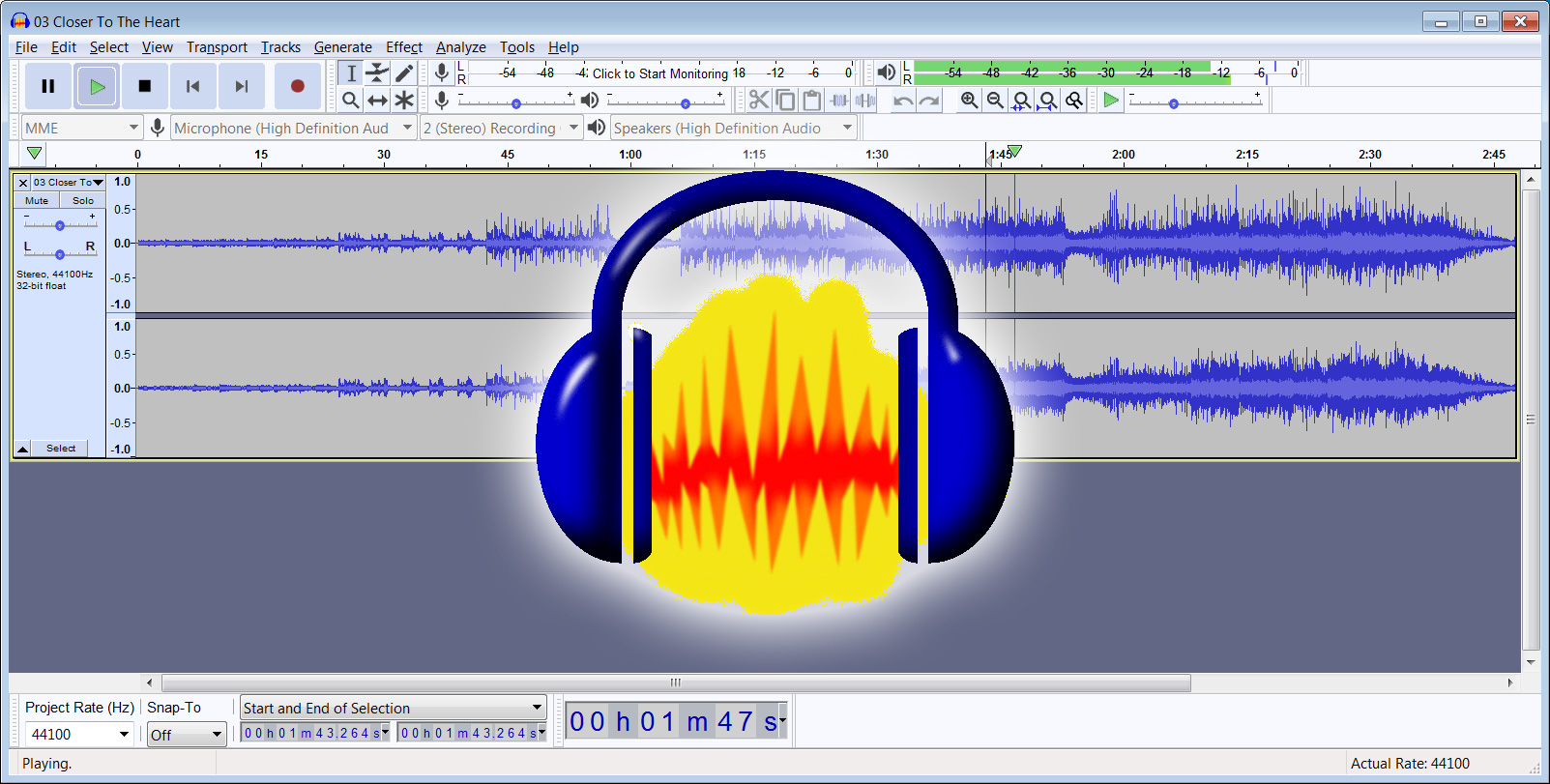Contents
During the editing of tracks on Audacity, music enthusiasts could copy and paste segments with relative ease. For short tracks that require small changes here and there, pasting segments is by all accounts a straightforward affair. However, in long tracks with complex demands, pasting segments carelessly would cause several issues and the unintentional moving of adjacent segments is a prime example. Unsurprisingly, the topic of Audacity paste without moving captures the interest of Audacity users around the globe.
What You Could Do
Unable to stop segments of your Audacity tracks from moving out of position as you use the paste command to relocate certain segments? Then there is a very good chance that this article can help you out. Down below is a list of measures that you may use to preserve the segment order while pasting segments.
Try To Match The Length
For your information, if a selection exists before pasting, the pasted segment is going to replace the selection. If the pasted segment is shorter than the selection, segments that lie after the selection should move to the left. On the other hand, if the pasted segment is longer than the selection, segments that follow the selection automatically move to the right. Noteworthily, in the case the pasted segment and the selection share the same length, the nearby segments stay still.
Add A New Track
In layman’s terms, by adding a new track under the original track, it’s possible to paste segments and retain the segment order simultaneously. First, hit Track on the top of the screen then click Add New to add a new track. Second, paste the segment to the new track but pay attention to the position: it must correspond to its supposed position on the original track. Third, use either Mix and Render (Tracks > Mix > Mix and Render) or Export (File > Export > Export Audio) to combine everything.
Note: The combination of tracks impacts the audio quality to a certain extent on occasions. Hence, depending on the requirements, you should use Envelope Tool, Amplify, Normalize and other effects to tweak the sound. By experimenting with the effects, you would be able to optimize the audio of your track in the end. You always have the option of reversing the effects via undo so there is no need to hesitate.
Apply Changes To Track Behavior
You like to disable the moving of segments completely as you copy and paste segments? In that case, you may want to change the track behavior on Audacity. To do so, select Edit, choose Preferences and hit Tracks Behaviour. Next, you have to uncheck “Editing a clip can move other clips”. From that point onward, you could move segments of your tracks back and forth while locking the segment order.
Keep in mind that Audacity enables “Editing a clip can move other clips” by default for a reason. By keeping that behavior on, you should be able to edit segments (cut, paste, delete, …) smoothly for most of the time. Nonetheless, if you disable “Editing a clip can move other clips”, you need to think about room throughout the editing process. For instance, if you paste a segment to a location that is too narrow for it, an error message is going to pop up.
Editing Track On Audacity: Advice
Audacity paste without moving is only one of many headaches that Audacity users have to deal with. That being said, if you follow the suggestions down below, you can wrap up the edit of tracks in no time.
Go From Left To Right
All in all, you may work on your tracks from whatever direction you wish on Audacity. Still, if the situation permits, it’s strongly recommended that you go from left to right instead of the other way around. The left-to-right approach ensures that if you have to paste segments, there won’t be any audio beyond the pasting point. Thus, you would be able to eliminate the hassle of maintaining segment order as you paste segments of variable lengths to your tracks.
Make Use Of Macros
In the case that you repeatedly use the same set of effects for your tracks, it’s a good idea to use Macros. By taking advantage of Macros, you could get Audacity to apply effects automatically which saves time and effort.
- Step 1: Select Tool, pick Macros and click New
- Step 2: Name your set of effects
- Step 3: Hit Insert to add effects
- Step 4: Use Edit to adjust the parameters of effects
- Step 5: Choose OK
From now on, every time you need to play tracks with specific effects, select Tools, hit Apply Macros and choose the proper set. When a need arises, it’s possible to export and import sets of effects using the Export and Import commands. It’s worth pointing out that Macros files use the TXT format so you can open them using Text Editor. Text Editor is also an alternative for editing Macros files but it’s best to manage your sets of effects using Audacity.
Always Keep Project Copies
With Undo by your side, it’s safe to run tracks through a number of experiments yet you could never be too careful. For good measures, you must put copies of your projects at several places in case things go wrong out of the blue. To save a project, choose File, pick Save Project and choose Backup Project. That would make a copy of your project while leaving it open for more editing.
An Audacity project consists of two parts: an AUP3 file and a Data folder. As a precaution, you should keep the file and folder together, don’t change their name, …
Practice With Key Combinations
You can use your mouse to execute a wide range of actions on Audacity but depending on the mouse alone is less than ideal. As you spend more and more time editing Audacity tracks, it’s wise to master the shortcuts to improve the workflow. While using Audacity, you would notice key combinations next to commands, effects and so on. Moreover, it’s possible to obtain a summary sheet of Audacity shortcuts by searching around on the Internet.
Consider Downloading Plug-Ins
Overall, built-in features of Audacity prove sufficient for standard projects in most of the cases. However, if Audacity features fall short of your needs, you should download some third-party plug-ins to improve editing capabilities. Audacity is compatible with various plug-ins so you could make use of quite a few effects. As long as you match the version of plug-ins to that of your Audacity, the installation is going to be child’s play.
FAQs
What should I do to update Audacity?
Launch Audacity, select Help and choose Check for Updates. That would bring you to the Download Section of the Audacity. All you need to do is to check whether the version listed there is the same as yours. If a new version is out, you have to install it at the earliest opportunity.
How come my Audacity runs slowly?
In the beginning, besides Audacity, you need to close all other programs on the screen to free up resources. Next, If Audacity remains sluggish, it’s widely advised that you save your progress then close Audacity. Wait a bit then open Audacity again and see if its processing speed is back to normal. Last but not least, dismiss tracks you no longer keep so they don’t clump up on the screen.
Is it possible to contribute to the improvement of Audacity?
Audacity is an open-source program and its developers always welcome contributions from users. In the case that want to help, visit the Audacity website, go to the Get Involved tab and choose the categories that suit you.

Hi music fan! I am Jeff. Hope that you enjoy some stuff I shared here in my personal blog.
About myself, Currently I am in charging as Artist Manager/Music Supervisor at 72 Music Management. I did managed album to Grammy Award in 2017 with 7 Nominations from 2014-2020 and had the opportunities to work with : A.J. Croce, Blind Boys of Alabama, Bobby Rush, Dom Flemons, Dustbowl Revival, Sarah Grace
Governor of the Memphis Chapter of The Recording Academy is one of a award that I am lucky to achieved.



